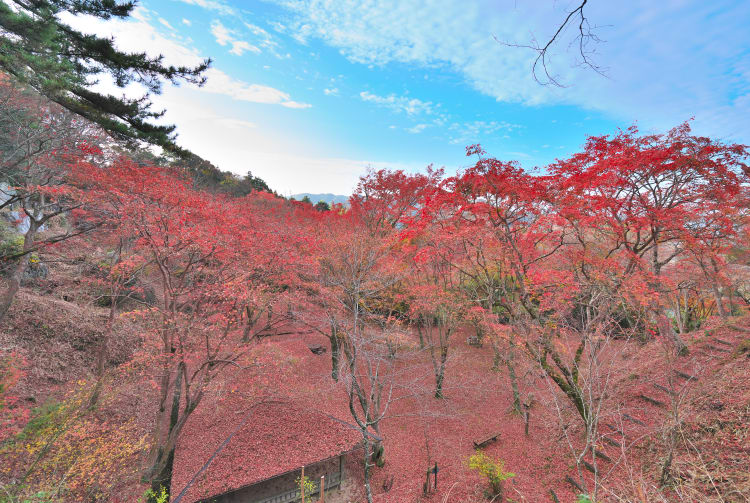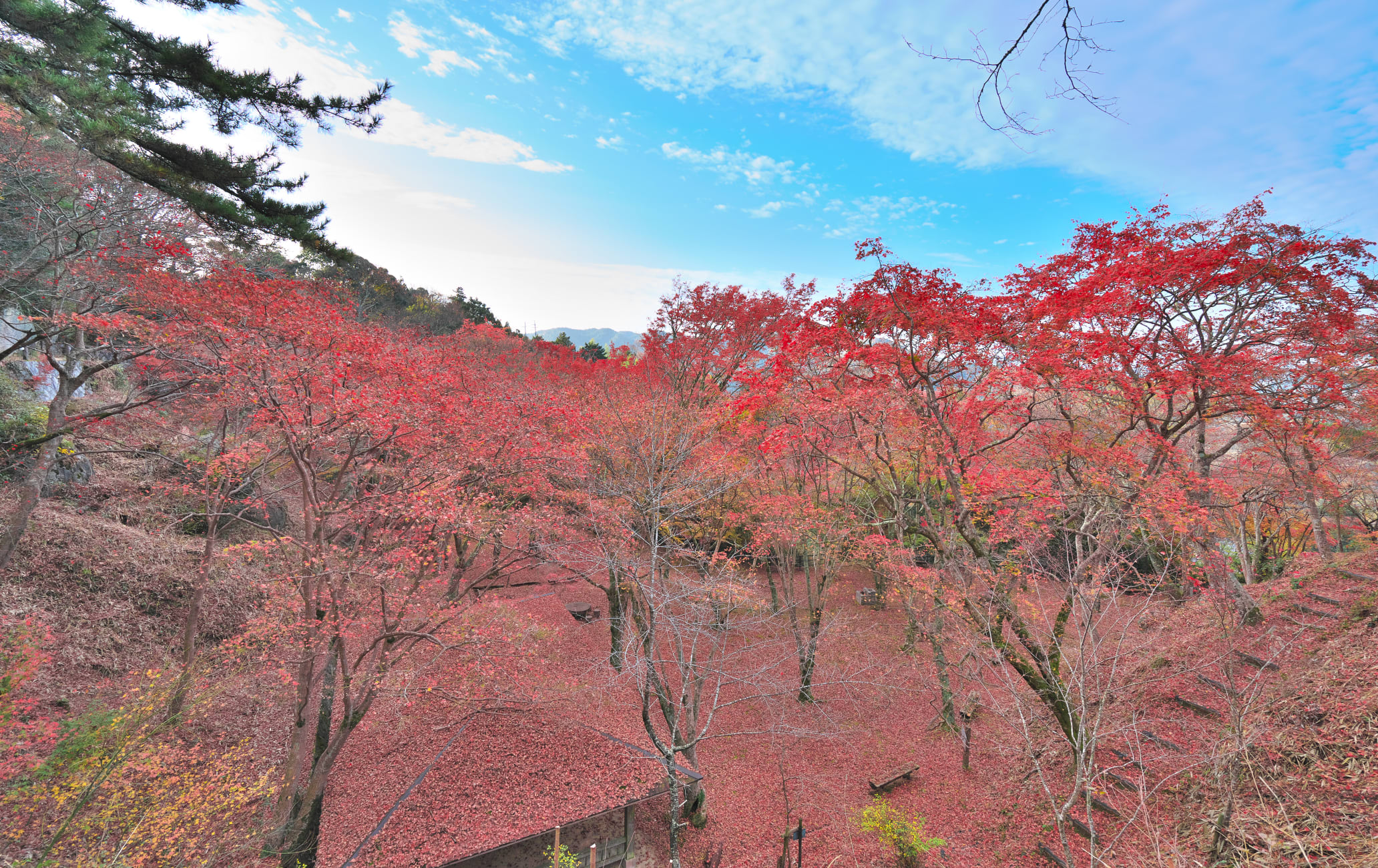Ideal park for hiking and history buffs
Kasagiyama Natural Park lies near the border between Kyoto and Nara Prefecture in the southeast of Kyoto. Seasonal foliage, beautiful vistas, and opportunities for simple but invigorating hikes all make it a spot worth exploring.
Quick Facts
Kasagiyama ranks among Japan's top 100 spots for cherry blossom viewing
Onsite Kasagidera Temple is shrouded in myth, with its ancient origin connected to the exploits of Emperor Tenmu
Kasagiyama Natural Park stretches from Mt. Kasagiyama to the Kizu River
How to Get There
Reach Kasagiyama Natural Park by train.
From Kyoto Station , take the Nara Line to Kizu Station. Transfer to the Yamatoji Line to Kamo Station. Transfer to the Kansai Line and get off at Kasagi Station. From there, the Kizu River is about a 10-minute walk away, while the journey to Mt. Kasagi itself will take about 45 minutes.
A scenic park
Kasagiyama Natural Park includes Mt. Kasagiyama and Kizugawa Gorge. Its hiking course attracts tourists and locals alike.
The park was officially selected as one of Japan's Top 100 Cherry Blossom Spots, and in spring the entire area around the banks of the Kizu River are covered in blossoms. Sakura aren't the only thing on offer here—the area also includes Momiji Park, whose bright autumn leaves are lit up every night during the month of November from 5 p.m. to 9 p.m.
Kasagidera Temple
At the top of the mountain, you can find impressive Buddhist statues carved into the natural rocks. Legend has it that Emperor Tenmu (631-686) was chasing a deer on Mt. Kasagi when he encountered danger. After praying to Buddha, he was saved. In homage, he carved an image of the bodhisattva Maitreya on a large stone. Kasagidera Temple now stands on this ancient site.
A historic site
Historic sites related to Emperor Go-Daigo (1288-1339) can be found on the mountain. In 1331, Go-Daigo's plans to overturn the Kamakura shogunate were discovered, and he fled with the Sacred Treasure of Japan. Comprised of a sword, a jewel, and a mirror, these represented the country's imperial regalia. He hid them in a far away castle in Kasagiyama, but was soon caught and sent into exile by the shogunate.


























































